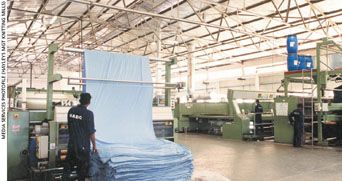WORKPLACE DEMOCRACY
Courtesy Centre for Poverty Analysis (CEPA)
THE SPIRIT OF SELF-MANAGEMENT
Democratising the workplace can boost creative potential immensely

In a notable scene from famed documentarian Michael Moore’s film ‘Capitalism: A Love Story,’ an engineer from a technology firm called Isthmus claims: “There is always a big separation in how the country is run and how businesses are supposed to run.”
This statement highlights the fact that while we profess to value our use of democratic decision-making in the political process, such cherished values do not extend to our everyday workplaces where we continue to accept a mostly totalitarian power structure.
While we talk about empowering the most economically marginalised segments of society, we’re content to limit this to a list of mostly token gestures, stopping short of anything that results in a transformational shift in the structures of economic and power relations.
The democratisation of the workplace is a complicated affair but there are real-life examples where this practice has resulted in successful businesses worldwide. And the most notable examples are when workers successfully managed to democratise the workplace as a response to a wider economic crisis.
One of the most studied cases in this paradigm shift pertains to the Recovered Factory Movement in Argentina.
More than a decade following the most brutal neoliberal programmes ever instituted in a developed economy, Argentina experienced a catastrophic economic crisis that resulted from a rapid flight of capital perpetrated mainly by wealthy local as well as foreign investors. It left ordinary citizens unable to access even their own money.
In 1998, Argentina tumbled into a recession that accentuated the deterioration of working conditions of employees and led to an increase in unemployment. In 2002, the unemployment rate reached nearly 25 percent – the highest level in the nation’s history.
Some industrialists who closed factories also attempted to sell any remaining valuable assets. As many of the factories were built with public money, tax incentives and generous land transfers, permitting their owners to sell the assets was deemed unacceptable.
The Recovered Factory Movement began as workers attempted to block these actions, gradually resorting to occupying the factories and running them. The movement grew to include over 200 factories in Argentina that employed in excess of 10,000 workers. In turn, this not only saved jobs but created new positions as well.
Worker-owned and self-managed cooperatives also possess a counter cyclical function.
This is crucial when the economy is experiencing a downturn as priority is placed on keeping individual workers employed, thus increasing incomes and demand, while private firms concentrate on the rate of return for external investors and owners. The movement adopted several models: some factories were run without a management layer by adopting direct democratic decision-making processes; others opted to have a layer of management, albeit within the same pay grade.
Of course, the discussion on what remains the ideal model continues to evolve with the challenges experienced by workers.
While the creation of worker-owned cooperatives has succeeded at times, they’re also prone to failure and closure. This is not due to an inherent failure on the part of the workers but has more to do with the fact that worker-owned and run cooperatives have to compete with private firms in the marketplace that are supported by wealthier investors who can out-price and out-produce the competition.
So there have been calls by some workers of recovered factories for the state to play a more prominent role in investing in their enterprises.
If we’re to seriously consider democratising the workplace, we must build on existing literature and experiences of other countries, and look at what would work best for Sri Lanka.
It could be like the Mondragon Corporation that has been successfully implemented in the Basque region of Spain or gradualist approaches such as the Rehn-Meidner model, which was implemented in Sweden. In the case of the latter, it was proposed that an annual levy on profits would be converted into shares and placed in a central fund controlled by the trade unions, which at the time represented over 80 percent of workers.
Whatever the approach, if we’re serious about maximising the creative and intellectual potential of all worker-citizens, we need to view self-management as a viable option.



